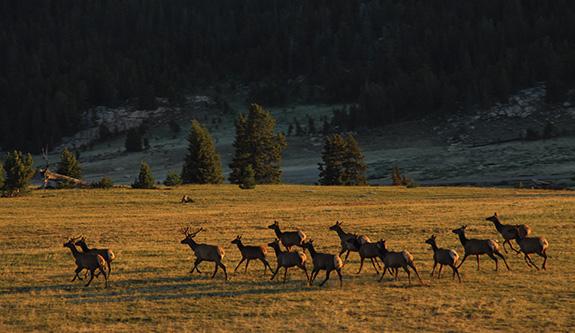Word to the Wild
Public discourse on public lands.
Montana’s wild backcountry is essential to our state. From the high alpine to forested foothills, sagebrush-steppe grasslands to abundant riparian areas—it’s a diverse landscape, and it supports incredibly diverse wildlife species, game and non-game alike.
Of our massive wildlands inventory, 3.4 million acres are protected primarily for wildlife as Wilderness Areas under the 1964 Wilderness Act. This law puts the highest level of protection on lands, leaving it wild and “untrammeled by man.”
But we also have other lands that are largely untouched, and just as important for wildlife. These are public lands that have not been designated Wilderness, but have many of the same characteristics. They include National Wildlife Refuges, designated roadless lands within the national forests, and designated Wilderness Study Areas that are managed by the U.S. Forest Service and the Bureau of Land Management. These WSAs were designated as such with the intent that they be protected and managed as Wilderness until Congress makes a determination on their status.
We have seen attacks on these lands, measures that would release them from WSA designation. Proponents claim these efforts would increase public access. In truth, opening these lands to oil and gas development, logging, and motorized use would severely degrade our wildlife, our access, and ultimately, our hunting opportunity.
Wilderness lands offer superb hunting opportunity. And just as importantly, they offer secure habitat that provides corridors for migrating wildlife. State biologists have collaring studies that show elk and deer migrating from these lands onto lower-elevation National Forest and BLM lands, as well as private farms and ranches. And there are numerous peer-reviewed studies that show that motorized vehicles displace elk, pushing them to secure habitat.
This is why it’s so important that we have honest discussions about the future of these lands. In fact, those discussions have been taking place for years, and the fruit of that work has shown in consensus measures including the Rocky Mountain Front Heritage Act, which passed in 2014, and the introduced Blackfoot Clearwater Stewardship Act. Elected officials should honor the years of hard work that has gone into these efforts, which bring incredibly diverse interests together.
Ultimately, through collaborative efforts, some public lands should be designated Wilderness Areas. Others might be more suited to a different level of protection, like a recreation or conservation area. And still others can be released. It’s an important discussion to have, but measures that release them across the board without that discussion are poor public policy that sow division. Montanans deserve better about an issue that is so important to our state’s economy and our way of life.
Nick Gevock is the conservation director for the Montana Wildlife Federation.









